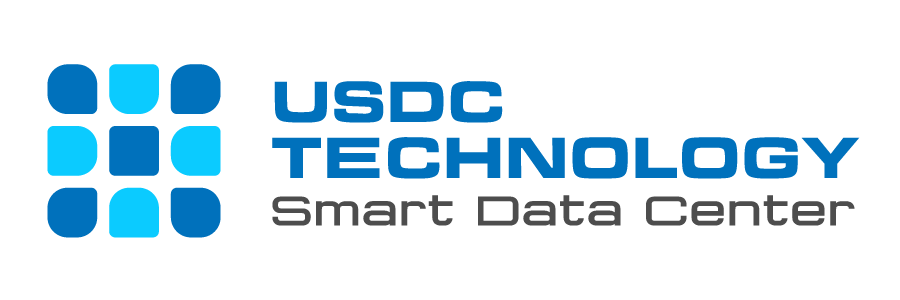Optimizing chilled water systems is crucial for improving energy efficiency, reducing operational costs, and ensuring proper cooling in buildings. Here are some strategies to optimize chilled water systems:
Elevating Air and Water Temperatures for Enhanced Data Center Efficiency
In recent years, the conventional operational temperature for the white space in data centers hovered around 24 degrees Celsius. Presently, it is not uncommon to witness data centers operating with temperatures ranging from 24 to 25 degrees Celsius in proximity to servers, while the return air to indoor cooling units reaches 36 to 37 degrees Celsius. Similarly, there has been a notable increase in water temperatures, moving from the previously common 10-15 degrees Celsius to 15-18 degrees Celsius and even higher. Some major hyperscalers have pushed the inlet temperatures for computer room air handler (CRAH) units beyond 20 degrees Celsius.
This substantial temperature escalation necessitates a heightened reliance on free-cooling technologies. These technologies utilize colder ambient air, which is colder than the set point of the supply chilled water, for cooling, rather than relying solely on the refrigeration cycle of traditional chillers. Systems employing free-cooling can leverage cold external air temperatures as the primary cooling source, minimizing the use of direct expansion (DX) systems to handle peak loads during the hottest periods of the year. This transition involves a shift from basic chillers to more advanced solutions like free-cooling chillers, combining the exceptional efficiency of free-cooling with continuous cooling availability in all conditions, assured by the DX system. Furthermore, the integrated control of free-cooling chillers facilitates “mixed mode” operation, allowing the compressor to intervene during mid-season conditions and compensate for higher air temperatures that may limit free-cooling.
Enhancing Efficiency through Comprehensive Control of Chilled Water Systems
The second crucial step in maximizing the efficiency of chilled water systems involves optimizing the system holistically by seamlessly coordinating the operation of external and internal units. This coordination is achieved through the utilization of chilled plant managers. These advanced systems can effectively synchronize the operation of all units within the chilled system. With this elevated level of control, plant managers can optimize multiple chillers operating under variable flow conditions, resulting in reduced pump consumption and increased return temperatures of the fluid to the chillers.
Furthermore, plant managers can implement temperature optimization logic tailored to the diverse operating conditions of the data center. This optimization significantly enhances chiller efficiency while concurrently ensuring the optimal temperature at the front of the servers.
Enhancing Energy Efficiency through Advanced Compressor Technology
In data centers situated in mild climates, a substantial portion of total energy absorption is attributed to the chiller compressor. Leveraging innovative and efficient compressor technologies becomes pivotal in achieving heightened compressor efficiency. In recent years, there has been a notable surge in the adoption of inverter-driven compressors, offering substantial benefits in terms of efficiency. The introduction of freecooling chillers equipped with inverter-driven screw compressors or oil-free centrifugal compressors has become a prominent solution. These advancements contribute to an enhanced energy efficiency profile for chilled water systems, consequently leading to a significant reduction in electricity consumption.
Adiabatic Technology for Enhanced Chilled Water System Efficiency
An innovative approach to boost the efficiency of chilled water systems involves the utilization of free-cooling chillers employing adiabatic technology. Adiabatic systems, especially when paired with adiabatic pad systems, prove effective for year-round use, not limited to peak conditions, yielding substantial advantages. Within an adiabatic system, ambient air undergoes humidification and cooling without incurring additional energy costs, achieved by passing the air through wet pads.
The conditioned air is then delivered at a lower temperature to the free-cooling and condensing coils. This results in an increased free-cooling capacity and more efficient compressor operation. Evaluating the sustainability of cooling systems includes considering the Water Usage Effectiveness (WUE), calculated by dividing annual site water usage in liters by IT equipment energy usage in kilowatt-hours (kWh). This metric is particularly valuable for those operating in, or contemplating expansion into, high-stress water regions.
High water usage in data center cooling is often associated with open-loop systems, where water is utilized to spray heat exchangers for expanding the operating range or capitalizing on free-cooling savings. Adiabatic chillers and evaporative outdoor packaged solutions, while open-loop systems, employ onboard controllers to use water judiciously based on factors like redundancy, efficiency, or cooling demand. These controllers play a crucial role in preventing water wastage, thereby reducing the WUE of the data center.
Water is also employed when humidifying air within the white space, and in specific conditions, air conditioning provides both latent and sensible cooling capacity. Vertiv designs its floor-mount units with extensive exchange surfaces, delivering sensible cooling capacity without necessitating additional humidification. A well-manufactured water loop, once filled, remains sealed, requiring no additional water, thereby eliminating wastage.
Efficient water use plays a pivotal role in driving down the Power Usage Effectiveness (pPUE) of the system. This can be achieved by judiciously limiting water usage to specific conditions through effective control mechanisms.
Optimizing Chilled Water System Efficiency through Heat Recovery
Integrating heat recovery mechanisms can significantly enhance the efficiency of a chiller water system by repurposing captured heat from the data center for various applications. Rather than dissipating the heat load, this strategy efficiently captures heat, which can then be utilized to address heating requirements in different areas of the building, and neighboring structures, or even contribute to a district heating network. This approach is versatile and can be implemented in legacy data centers, even when the captured heat temperatures are initially low, by employing heat pumps to elevate the temperature for reuse.
Leveraging Cold Water Storage for Energy Efficiency
In the pursuit of energy conservation, cold water storage tanks emerge as a highly effective solution by functioning as Thermal Energy Storage (TES). This innovative approach aids in mitigating power plant loads during peak demand periods. Facilities strategically activate their chiller systems during off-peak hours, typically at night, to produce cold water, taking advantage of lower nighttime utility rates. Subsequently, these facilities tap into the stored cooling capacity during daytime operations, optimizing energy consumption for cooling purposes.
When incorporating high-density racks, it becomes essential to ascertain the specific heat load each system will manage, the required cooling capacity, the portion of capacity to be displaced by the liquid cooling system, and the remaining air-cooling capacity needed. Technologies such as rear-door heat exchangers, direct-to-chip liquid cooling, and immersion cooling are considerations when deploying a liquid cooling system.
Media Contact
Universal Smart Data Center Technology
Phone: (+84) 28 73080708
Email: info@usdc.vn


